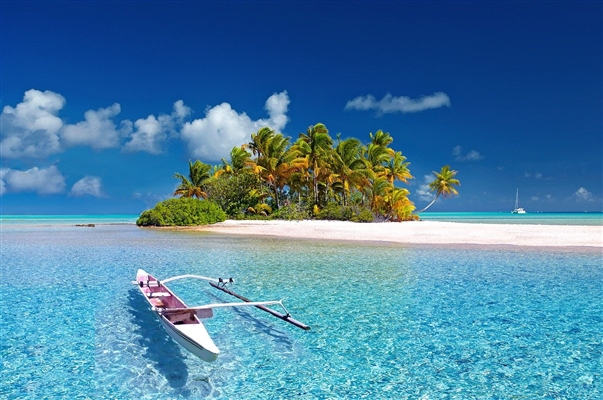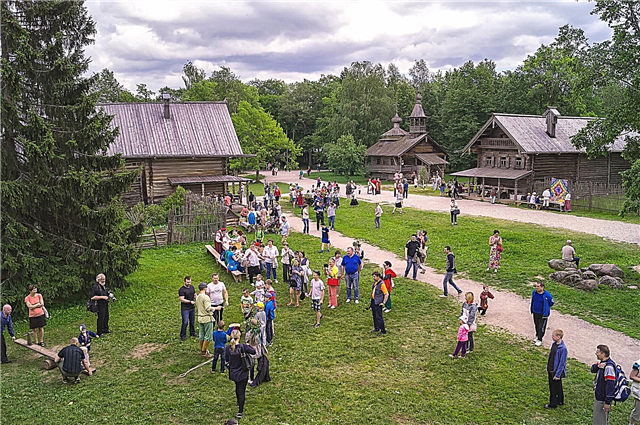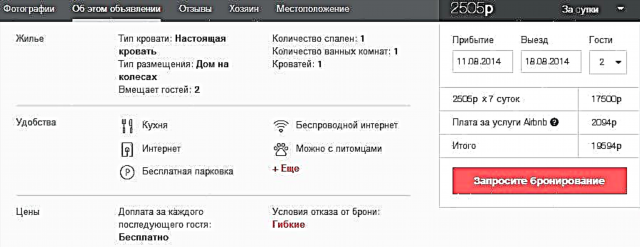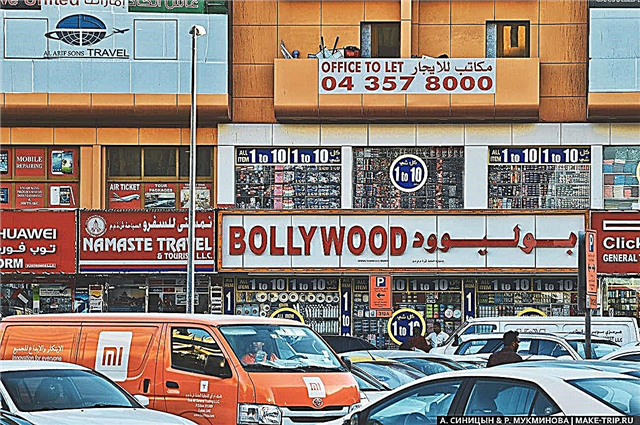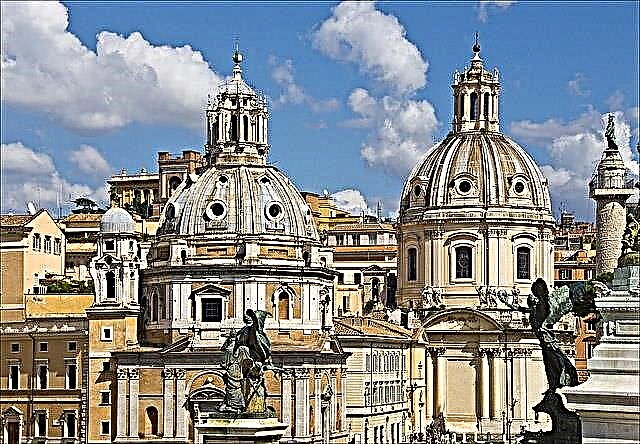Itineraries in Rome: what to see in 1, 2 and 3 days on your own. Entrance fees, opening hours of attractions and how to get there.
Cradle of Christianity, the Eternal City - as enthusiastic tourists do not call the capital of Italy - Rome. It was here that people of art drew inspiration, the fate of people and entire states was decided. It is one of the most visited cities in the world, where millennial buildings are surprisingly combined with modern facilities.
Do not be under the illusion that all the iconic places in Rome can be seen in a few days. A city with a long history, which has experienced the heyday and collapse of the greatest empire, is so multifaceted that it is impossible to get acquainted with its sights in full in such a limited time. After a few hours of walking around the city, tourists begin to feel dizzy from the abundance of impressions and an abundance of information, nevertheless, you should not lose your head - if time is short, you should try to see at least the main cultural monuments. In this article, we will outline a route through the Eternal City and tell you what to see in Rome on your own in 1, 2 and 3 days, as well as provide useful information - ticket prices, opening hours of cultural and architectural monuments, as well as how to get to them by public transport and on foot.
Look for author's interesting excursions on the Sputnik and Tripster sites. Individual and group, no crowds of tourists and in Russian.

Walk around Rome in 1 day
So, it's better to start with the People's Square. Piazza del Popolo... You can get there by metro to the station of the same name or by tram number 2 to the Flaminio stop. The main decorations of the square are the Egyptian obelisk, the central fountain and two works by Cessarini - "Fountain of Neptune" and "Fountain of the Goddess of Rome", next to the Gate is the Church of Santa Maria del Popolo. The square is located on the Pincio hill, where the entrance to the Borghese gardens, the famous Via del Corso goes to the south, along which you can move to Piazza Venezia.
Via del Corso - a wide and ancient street, which is very well known to shopaholics all over the world: there are elite boutiques, restaurants and hotels. If you turn to Via del Murate, you can find yourself at the most famous fountain in the city - Trevi.
In the center Trevi fountain - sculpture of the sea god. The bottom of the fountain, completely strewn with coins, indicates the extraordinary popularity among tourists. According to statistics, every day from Trevi they extract small change worth 1,500 euros. There is a church opposite the fountain San Marcello al Corsodecorated with sculptures and bas-reliefs by Cavallini and Raji.
Returning to Via del Corso, you need to proceed directly to square of Venice, where the Altar of the Fatherland and the famous Venice Palace are located.
Palace of Venice, previously used by the Venetian embassy, was later elected by the government of Mussolini. It was from the balcony of this building that Mussolini spoke to the people. Now there is the Palazzo Venezia Museum of Decorative Arts, and the Cere wax museum is also located here. The museum is open from 8:30 am to 7:30 pm, admission is 5 euros.

By the way, most of the city's museums are closed on Mondays, December 25 and January 1, and some can be entered for free - if you know when. When visiting museums and other attractions, it is best to use the Roma Pass, which will save you time and money.
Altar of the Fatherland built for the anniversary of the unification of Italy. A wonderful view of the city opens from the Altar, for which you need to take the elevator (7 euros) to the observation deck and, after admiring the views, walk to Capitol Hill.
The staircase of Michelangelo with antique sculptures of lions from the temple of the goddess Isis in Egypt and statues from the theater of Pompeii attracts attention. In the center of the square is a copy of the statue of Marcus Aurelius. Now the Capitoline museums are open in three palaces, the entrance is 12 euros, from 8 to 20. The museum contains the original statue of the She-Wolf, feeding Romulus and Remus. A copy of it is installed at the entrance to the building.
On the right is an arch through which you can go to The Roman Forum... If you wish, buying a ticket, you can wander here among the ruins of ancient temples and columns, or go to Via dei Fori Imperiali, leading to the Colosseum.
What else to see in Rome on your own in 1 day? Of course, the symbol of the Eternal City is the ancient amphitheater Coliseumbuilt from 70 to 82 n. e. for gladiatorial battles, included in the new seven Wonders of the World. Entrance costs 12 euros, admission from 8:30 to 19:15 (summer), in winter until 16:30 or 17:30. In the evening, the Colosseum is illuminated and looks very unusual. Nearby is the Colosseo metro stop on Via dei Fori Imperiali, where you can end your walk.
Rome hotels
Haven't found a suitable hotel yet? We advise you to do this well in advance! To find hotels at the best price and other parameters, we recommend using Roomguru.ru - a search engine that compares prices and allows you to find the best deal. If you start looking for accommodation in advance, you can find good hostels in the city center at prices from 16 € per person, and double rooms in a three-star hotel from 43 €, and great apartments from 80 €. If you do not need to be located in the very center, then you can find accommodation cheaper.

2 days in Rome: what to see?
On the second day, we continue the walk, interrupted the day before, with St. Peter's Square - it is convenient to get there by metro, stop Ottaviano. Along Via Ottaviano, thousands of tourists and residents of the Eternal City rush to the square. A special pandemonium is happening here on Sunday. In the center of the square is an Egyptian obelisk, erected during the time of Caligula, a little further - St. Peter's Basilica, the central cathedral of the Vatican and the entire Roman Catholic Church.
Via della Conciliazione leads to bridge Ponte Vittorio Emanuele II, richly decorated with relief images and sculptures. The bridge was opened in 1911 to celebrate the anniversary of the country's unification.
Further, the route runs along the embankment to the castle of St. Angelo, or Hadrian's mausoleum (Castel Sant'Angelo). There was a fortress, the residence of the Pope and a tomb. The dungeon and first floor served as a prison. It was here that Giordano Bruno, Galileo and Count Cagliostro languished. Now in the castle is the Military History Museum, entrance - 8.5 euros, open from 9 to 19:30. From the castle lies the most beautiful Saint Angel Bridge (Eliev Bridge) with original statues.
The Lungotevere Castello leads to the Palais de Justice on the Piazza dei Tribunali. Luxurious palace, the creation of the architect Calderini, the facade is decorated with a bronze chariot, on the sides - statues.
What else to see in Rome in 2 days? You can cross the river on the Umberto bridge and walk along the embankment, and then go a little deeper into the city and walk to the church San Giovanni dei Fiorentini on Via Giulia. The temple was built for almost 100 years. The main decoration of the temple is the altar by Borromini. By the way, this is the only church where cats and dogs are allowed.
From the church on Via Corso it is convenient to head to the side square of Navona - the former market and place of city festivities. In the center is the Agonalis obelisk, crowned with a dove with an olive twig, and the fountain of the Four Rivers. These are sculptural symbols of rivers from different parts of the world: Danube, Ganges, Nile and La Plata. Two more fountains - Moor and Neptune - surrounded the square at the edges.
From Piazza Navona you can proceed to The pantheon to the Piazza del Pantheon, a favorite place for musicians. Impressive is the giant dome of the Pantheon with a hole in the center; at noon, sunlight penetrates into the temple, standing in a huge luminous beam. Since 609, the ancient Pantheon became a Christian temple, which allowed it to survive to our times. Free admission.

What to see in Rome in 3 days
Vatican - this is what you should see in Rome on day 3. So, the Ottaviano metro stop. Walk along Via Ottaviano until you reach St. Peter's Square.The square itself deserves special attention, such a beautiful creation with semicircular colonnades, which, together with the cathedral, create the bizarre shape of the "key of St. Peter".
Login to Saint Paul's Cathedral free from 7 to 18:30 (in summer until 19), but the queues are huge, everyone passes through a metal detector. It is recommended to dress modestly, no shorts or bare shoulders. A visit to the cathedral will take at least 1.5-2 hours. The internal interior is striking in luxury, and magnificent views open from the dome of the cathedral. The entrance to the dome is paid, walking up the narrow spiral staircase costs 5 euros, taking an elevator to the roof - 7 euros, and then still walk another 320 steps.
There are many museums and halls on the territory of the Vatican, including the famous Sistine Chapel, where the Pope has been elected for several centuries in a row. The richest collection of antiquities and antiquities. The Nikolina chapel, the Borgia apartments, the Vatican Pinakothek, Raphael's Stanzas are striking in their paintings. The Vatican Library, a gallery of tapestries and a collection of contemporary church art with paintings by Dali, Chagall, Picasso, Kandinsky, Modigliani and others deserve special attention.
In order not to languish in queues at the Vatican Museums, it is better to book tickets online. Every last Sunday of the month, admission is free from 9 am to 12:30 pm, other Sundays, 1st January and major church holidays, museums are closed. On other days, they work until 18:00. The ticket price is 15 euros. Among the museums there is a small terrace with a garden, where you can just walk.
Popular excursions in Rome
After a rich cultural program, there is nothing better than dine in a cozy restaurant with a glass of real Italian wine and admire the views of the evening Rome in the setting sun. The Eternal City is impressive and inspiring, so it's no surprise that people come here again and again.
If you did not have time to see all the interesting places in Rome in 3 days, do not be discouraged - there will be a reason to return to this beautiful city. Of course, this route does not claim to be comprehensive - you can adjust it as you like. Write in the comments your options for itineraries in Rome - what to see on your own, how would you spend your time in the Eternal City, and what non-tourist places would you recommend other travelers to visit?



